Tomb Of Nicolaus Copernicus: Is The Mystery Surrounding Astronomer’s Burial Place Really Solved?
A. Sutherland - Ancient Pages.com - The Polish astronomer, Nicolaus Copernicus (1473 -1543) made crucial observations in Rome in 1500. Copernicus's heliocentric worldview was revolutionary and ended the old perceptions. His world view, however, was ignored by the Catholic Church.
For centuries, the tomb and leftovers of Nicolaus Copernicus were sought at the Frombork cathedral, the alleged burial place of the great astronomer.
It was also a place where the great Polish astronomer spent two-thirds of his adult life and was buried.
The first unsuccessful attempts to find the grave of Copernicus were undertaken in 1809 by the Warsaw Scientific Society. Later in 1807, Napoleon Bonaparte after the battle of Prussian Ilawa (now Bagrationowsk, about 75 km east of Frombork), ordered one of his officers, Gerard Gley, to find the grave of Nicolaus Copernicus. No positive results for this search were reported.
Also the next research (also fruitless) was carried out as part of the celebrations of the "Week of Kant and Copernicus", which was to take place at the University of Königsberg in February 1939.

Copernicus' annotated copy of the Calendarium Romanum magnum takes a central place in this photograph of his books at the Uppsala University Library. In the foreground is a Regiomontanus title known to have been used by Copernicus but not located, so a substitute copy completes the picture. Photograph by Owen Gingerich
Under the high altar
Copernicus’ last resting place remained a mystery for a very long time.
In 2004, a group of Polish scientists launched a new search for Copernicus' grave. The exact location was uncertain, but it has been thought that the grave could be located near the St. Cross Altar because Copernicus was in charge of this altar during his tenure as priest at the Cathedral.
See also:
Copernicus’ s Book Banned By Catholic Church – On Mar 5, 1616
Emilia Plater: National Female Hero Of Polish And Lithuanian People
In 2005, the meticulous almost detective work finally yielded positive results and Polish archaeologists found what they were looking for. Copernicus remnants were discovered under the floor of the Frombork cathedral in northern Poland and it was a Swedish DNA analysis that finally made the whole picture complete.
At first, the remains of a 70-year-old man, who could possibly be identical to the great Copernicus, were kept anonymous. Later, researchers used computer graphics to build an artificial face. This face turned out to be very similar to Copernicus's portrait, including even a scar above the right eyebrow and evidence of a broken nose.
But it wasn’t enough to convince the researchers that the remains did really belong to Nicolaus Copernicus.
A DNA test was needed to gain greater certainty and surprisingly a suitable material was delivered by Swedish researchers in form of one of the books the Polish cosmologist had annotated.
This valuable book (now stored at the library of the University of Uppsala in Sweden) was the Calendarium Romanum magnum, in which 9 hairs were found, of which 4 were suitable for careful extracting of DNA.
Two of the hairs matched the DNA segments from a well-preserved cranial tooth.
There are still some doubts
The dispute of scientists seems to be serious, and also there are arguments undermining the identification of the findings in 2005. Many believe that the exact place of burial should still be considered an unresolved issue.
In order to discuss the controversies associated with the discovery of Copernicus' grave and identification of the remains, a scientific conference entitled "The Mystery of the Tomb of Nicolaus Copernicus, A Dialogue of Experts", was organized for all interested in the issue.
Unfortunately, most people involved in the search and research did not accept the invitation to participate in the conference.
Is the mystery surrounding Copernicus ‘ burial place really solved?
Copernicus was born in Polish Torun 1473 and eventually became the priest and the catholic canon at Frombork. He was also a scientist who shocked the world with his controversial thesis that the sun and not the earth was the focal point of the universe. He lived and died in Frombork.
Written by – A. Sutherland AncientPages.com Staff Writer
Copyright © AncientPages.com All rights reserved. This material may not be published, broadcast, rewritten or redistributed in whole or part without the express written permission of AncientPages.com
Expand for referencesMore From Ancient Pages
-
 Long-Lost Mesopotamian Queen Hama Discovered By Student Just By Reading Books
Archaeology | Feb 14, 2019
Long-Lost Mesopotamian Queen Hama Discovered By Student Just By Reading Books
Archaeology | Feb 14, 2019 -
 Hidden Tunnel In Tokat Castle – ‘The Dungeon Of Dracula’ – To Open Soon
News | Sep 22, 2015
Hidden Tunnel In Tokat Castle – ‘The Dungeon Of Dracula’ – To Open Soon
News | Sep 22, 2015 -
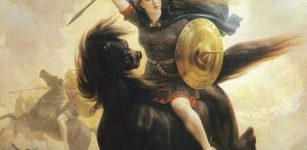 Mysterious And Powerful Valkyries In Norse Mythology: The Choosers Of The Slain
Featured Stories | Dec 1, 2015
Mysterious And Powerful Valkyries In Norse Mythology: The Choosers Of The Slain
Featured Stories | Dec 1, 2015 -
 Archaeological Discoveries At Fort San Juan Reveal Hidden History Of Conquistadors In American South
Archaeology | Mar 12, 2018
Archaeological Discoveries At Fort San Juan Reveal Hidden History Of Conquistadors In American South
Archaeology | Mar 12, 2018 -
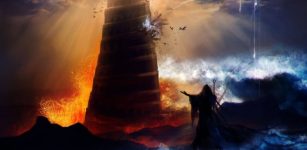 Secrets Of The Assyrian Dream Book And Dream Interpretation In The Ancient Near East
Featured Stories | Aug 6, 2021
Secrets Of The Assyrian Dream Book And Dream Interpretation In The Ancient Near East
Featured Stories | Aug 6, 2021 -
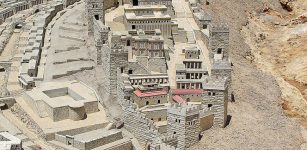 Has a 2,000 Year Old Podium Been Found in the City of David?
Civilizations | Sep 2, 2015
Has a 2,000 Year Old Podium Been Found in the City of David?
Civilizations | Sep 2, 2015 -
 Copper: First Metal Used By Ancient Man More Than 10,000 Years Ago
Ancient History Facts | Oct 25, 2016
Copper: First Metal Used By Ancient Man More Than 10,000 Years Ago
Ancient History Facts | Oct 25, 2016 -
 Ancient Skeletons Reveal Britain Suffered From Parasite Infections Since The Bronze Age
Archaeology | Apr 22, 2022
Ancient Skeletons Reveal Britain Suffered From Parasite Infections Since The Bronze Age
Archaeology | Apr 22, 2022 -
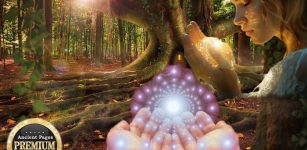 Mysterious Magical Healing Gift Of The Whisperers – Meet The Enigmatic Szeptunka
Featured Stories | Feb 10, 2025
Mysterious Magical Healing Gift Of The Whisperers – Meet The Enigmatic Szeptunka
Featured Stories | Feb 10, 2025 -
 Ancient Tools Used In Religious Rituals In Honor Of Goddess Hathor Discovered In Egypt
Archaeology | Sep 27, 2021
Ancient Tools Used In Religious Rituals In Honor Of Goddess Hathor Discovered In Egypt
Archaeology | Sep 27, 2021 -
 Brief History Of Abortion – From Ancient Egyptian Herbs To Fighting Stigma Today
Featured Stories | Oct 3, 2023
Brief History Of Abortion – From Ancient Egyptian Herbs To Fighting Stigma Today
Featured Stories | Oct 3, 2023 -
 Tomb Of Last Ruler Of A Sunken Kingdom Remains An Ancient Mystery
Ancient Mysteries | Mar 24, 2021
Tomb Of Last Ruler Of A Sunken Kingdom Remains An Ancient Mystery
Ancient Mysteries | Mar 24, 2021 -
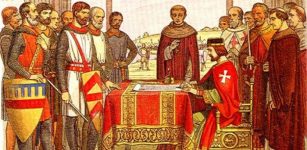 On This Day In History: King John Of England Died – On Oct 19, 1216
News | Oct 19, 2017
On This Day In History: King John Of England Died – On Oct 19, 1216
News | Oct 19, 2017 -
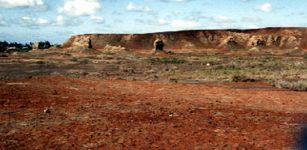 Roman glass-making furnaces discovered in Egypt’s Delta
Civilizations | Aug 25, 2015
Roman glass-making furnaces discovered in Egypt’s Delta
Civilizations | Aug 25, 2015 -
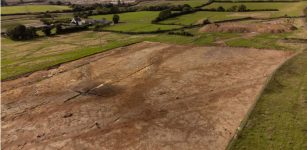 Intriguing Ancient Roman Road Discovered Under The New Town In Devon
Archaeology | Feb 7, 2023
Intriguing Ancient Roman Road Discovered Under The New Town In Devon
Archaeology | Feb 7, 2023 -
 Halicarnassus’ Monumental Tomb Built With Shining Stones Belonged To Carian Ruler Mausolus
Featured Stories | Jul 20, 2016
Halicarnassus’ Monumental Tomb Built With Shining Stones Belonged To Carian Ruler Mausolus
Featured Stories | Jul 20, 2016 -
 Ancient Manuscript In Museum Reveals Discovery Of Objects Unknown To Modern Science – Why Were The Ancient Time Capsules Hidden? – Part 3
Ancient Mysteries | Apr 14, 2021
Ancient Manuscript In Museum Reveals Discovery Of Objects Unknown To Modern Science – Why Were The Ancient Time Capsules Hidden? – Part 3
Ancient Mysteries | Apr 14, 2021 -
 Has A New Study Of 5,000-Year-Old DNA Solved The Mystery Of The Tarim Basin Mummies?
Civilizations | Mar 31, 2022
Has A New Study Of 5,000-Year-Old DNA Solved The Mystery Of The Tarim Basin Mummies?
Civilizations | Mar 31, 2022 -
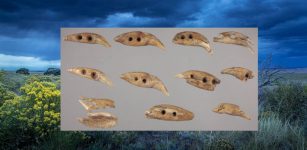 Remarkable Discovery Of Ancient Drilled Bear Teeth In Kansas – How Did They End Up On The Great Plains?
Archaeology | Mar 25, 2022
Remarkable Discovery Of Ancient Drilled Bear Teeth In Kansas – How Did They End Up On The Great Plains?
Archaeology | Mar 25, 2022 -
 Societies In Iberian Peninsula Deployed “Escape Economics” 4,000-Year-Old
Archaeology | Sep 28, 2022
Societies In Iberian Peninsula Deployed “Escape Economics” 4,000-Year-Old
Archaeology | Sep 28, 2022



